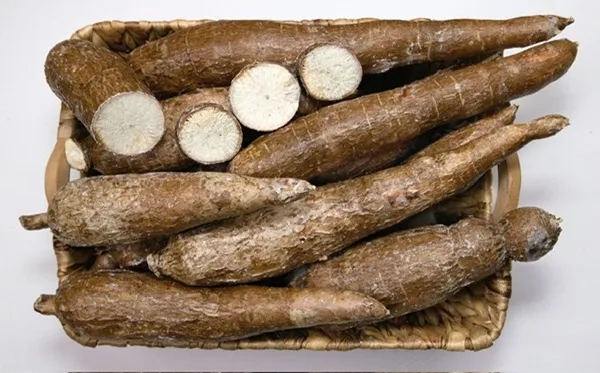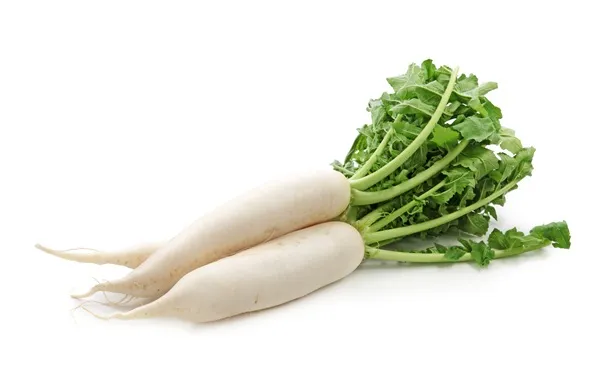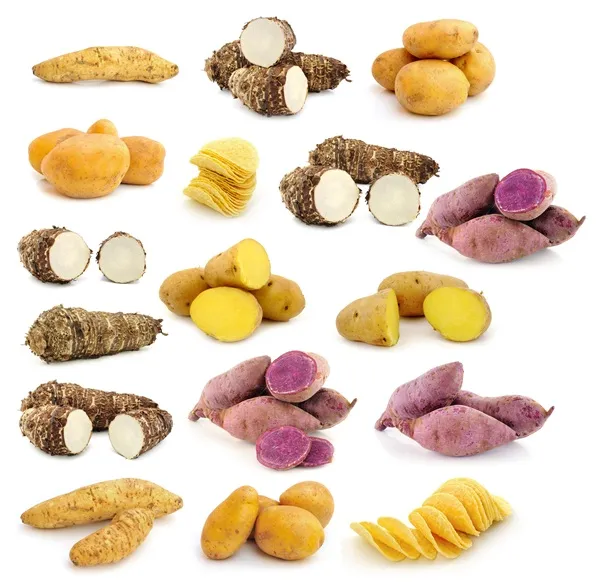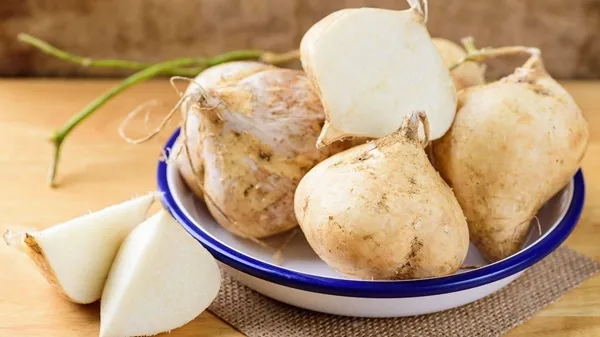Table of Contents
Root vegetables and tubers are the unsung heroes of the culinary world, offering versatility, nutrition, and unique flavors that can transform any dish. These edible plant parts grow underground and store energy in the form of starch, making them hearty and filling additions to meals. From everyday staples like potatoes and carrots to more exotic varieties like taro and cassava, root vegetables and tubers are prized for their adaptability across cuisines.
Root vegetables, such as carrots, parsnips, and turnips, are known for their sweet and earthy profiles, ideal for roasting, mashing, or adding to stews. Tubers, like potatoes, sweet potatoes, and yams, provide creamy textures and mild flavors that pair well with countless ingredients. Many of these are also nutritional powerhouses, rich in vitamins, minerals, and fiber.
A list of root vegetables and tubers with key details:
| Name | Description | Uses | Origin | Nutrition | Health Benefits |
|---|---|---|---|---|---|
| Carrot | Orange, purple, or white taproot; sweet and crunchy. | Salads, stews, roasted, juiced. | Persia (Iran/Afghanistan) | High in beta-carotene (vitamin A), fiber, potassium. | Supports eye health, immune function, and skin. |
| Potato | Starchy tuber with brown/red/purple skin; versatile. | Mashed, fried, baked, soups. | Andes Mountains (South America) | Rich in vitamin C, B6, potassium, resistant starch. | Boosts energy, supports gut health, regulates blood pressure. |
| Sweet Potato | Orange/purple flesh; sweet flavor. | Roasted, pies, fries, mashed. | Central/South America | High in beta-carotene, vitamin C, fiber. | Anti-inflammatory, stabilizes blood sugar. |
| Beetroot | Deep red/golden root; earthy flavor. | Roasted, pickled, salads, juices. | Mediterranean | Nitrates, folate, manganese, antioxidants (betanin). | Lowers blood pressure, detoxifies liver, boosts stamina. |
| Turnip | White bulb with purple top; mildly peppery. | Stews, roasted, greens sautéed. | Europe/Siberia | Vitamin C, fiber, glucosinolates. | Anti-cancer properties, aids digestion. |
| Radish | Small, crunchy, red/white/black roots; peppery. | Salads, pickled, garnishes. | Southeast Asia | Vitamin C, potassium, sulfur compounds. | Detoxifies liver, improves digestion. |
| Cassava/Yuca | Long brown tuber; starchy white flesh. | Boiled, fried (tapioca), flour. | South America | High in carbs, vitamin C, folate. | Gluten-free energy source (must be cooked to remove toxins). |
| Taro | Hairy brown skin with purple-speckled flesh; nutty. | Boiled, mashed, chips, poi. | Southeast Asia | Fiber, vitamin E, potassium. | Supports gut health, low glycemic index. |
| Jerusalem Artichoke | Knobby tuber; nutty, slightly sweet. | Roasted, soups, raw salads. | North America | Inulin (prebiotic fiber), iron, potassium. | Feeds gut bacteria, stabilizes blood sugar. |
| Parsnip | Cream-colored, carrot-like; sweet and earthy. | Roasted, soups, mashed. | Eurasia | Fiber, folate, vitamin K. | Supports bone health, reduces inflammation. |
| Yam | Rough brown skin; starchy white/purple flesh. | Boiled, fried, flour. | Africa/Asia | Vitamin C, B6, potassium. | Boosts immunity, regulates blood pressure. |
| Jicama | Crisp, juicy, slightly sweet; resembles a turnip. | Raw salads, slaws, stir-fries. | Mexico/Central America | Vitamin C, fiber, prebiotics. | Hydrating, aids weight management. |
| Rutabaga | Yellow-fleshed hybrid of turnip and cabbage; sweet. | Mashed, roasted, soups. | Scandinavia | Vitamin C, calcium, glucosinolates. | Anti-inflammatory, strengthens bones. |
| Lotus Root | Crunchy rhizome with hole pattern; mild flavor. | Stir-fries, soups, pickled. | Asia | Vitamin C, iron, fiber. | Improves circulation, reduces stress. |
| Celeriac | Knobby root with celery-like flavor; earthy. | Mashed, roasted, soups. | Mediterranean | Vitamin K, phosphorus, antioxidants. | Supports bone health, reduces oxidative stress. |
| Arracacha | Yellow/white root; resembles a cross between celery and carrot. | Soups, stews, fries. | Andes Mountains | Calcium, vitamin C, starch. | Easy to digest, supports bone health. |
| Malanga | Tropical tuber; hairy brown exterior, creamy white flesh. | Boiled, fried, soups. | Caribbean/South America | Fiber, magnesium, vitamin E. | Supports digestion, anti-inflammatory. |
| Oca | Small, colorful tubers; tangy and slightly sweet. | Roasted, boiled, raw (after curing). | New Zealand/Andes | Vitamin C, iron, oxalic acid (reduced by cooking). | Antioxidant-rich, supports immune function. |
| Yacon | Crisp, sweet tuber; similar to jicama. | Raw salads, syrups, juices. | Peru | Fructooligosaccharides (prebiotics), potassium. | Supports gut health, low-calorie sweetener. |
| Skirret | Cluster of small sweet roots; historical European vegetable. | Boiled, roasted, soups. | Europe | Fiber, vitamin C, calcium. | Anti-microbial, supports digestion. |
Key Notes:
- Nutritional Focus: Most root vegetables are rich in fiber, vitamins (A, C, K), and minerals (potassium, iron).
- Preparation: Some (e.g., cassava) require cooking to neutralize toxins.
- Versatility: Roots like potatoes and yams are global staples, while others (e.g., lotus root) are regional delicacies.
- Health: Many act as prebiotics, supporting gut health, and are low-glycemic for blood sugar control.
In addition to their culinary appeal, root vegetables and tubers play a significant role in global food security, as they are easy to grow, store, and prepare. Their historical significance and cultural importance make them staples in kitchens around the world.









